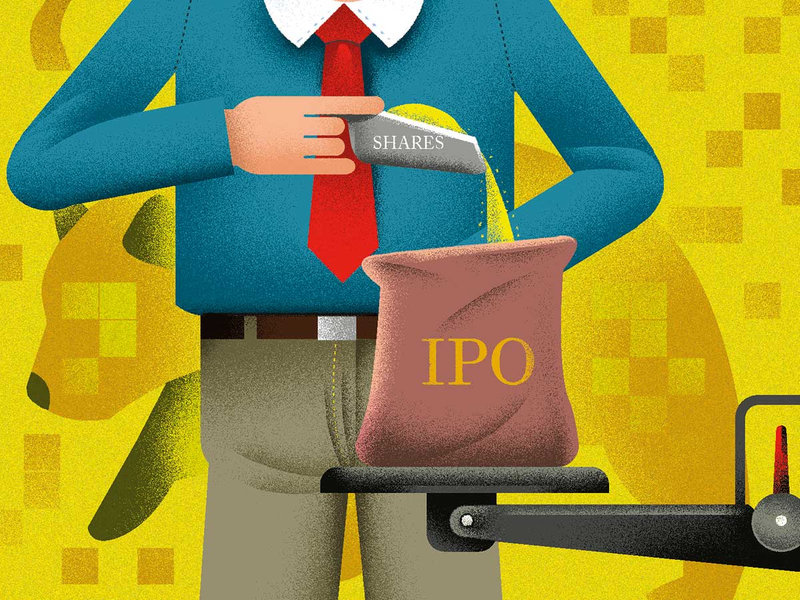
If you’ve decided to invest your hard-earned money into a company that has just decided to publicly list its shares on the stock market, Gulf News walks you through what you need to be looking out for.
When investing in an IPO, you can make a lot of money in a very short span of time, if you are not hasty. Tactful and timely decisions can bring you very good returns over a period of time. That period maybe short or long depending on the stocks purchased.
A poll indicated that the top-performing IPOs in the last decade gained from 100 per cent to 150 per cent by the debut year’s end, some in the first weeks or months. This may lure you into thinking an IPO is a sure-fire profit opportunity – till you consider that the worst-performing IPO companies lost between 50 per cent and 85 per cent of their value over the same time period. So be careful!
The more homework you do, the better
If you’ve been closely following the company’s growth, or you are familiar with the sector in which the company is working in, if you can assess the company’s growth potential and your substantial returns over a period of time – then you can invest.
But if it’s your first time, the answer is research, research, research.
It is a little tough to get information about companies that have decided to go public and hence it becomes all the more important for you to dig deeper. Let’s look at a few ways to do that below.
IPO booklet, top brass

The first thing to do here is to read the prospectus of the company thoroughly. The prospectus is a document that contains details about the company’s financials over the years, the reason for IPO, company management, dividend policy, offer information and regulatory disclosures.
The prospectus is a good starting point while researching about the company.
Matter experts have frequently advised investors to pay special attention to the management team and how they plan to use the money raised from the IPO – which can be used either to pay down company’s debt, growth and expansion.
This will give an idea into what the company’s operational performance will look like, and what is the management’s stance on improving shareholder returns or dividends.
Media, analyst coverage
Apart from this, search online for media reports of the company - were there any cases of defaults or issues in corporate governance, and how has it performed compared with peers. While this may seem like a time-consuming affair, do not bypass this step by just reading the prospectus.
You might unearth some vital information that might indicate the company’s prospects are not as bright as being projected and hence this might not be a suitable investment opportunity for you. So do your homework well.
Also there are research reports furnished by analysts that can provide useful information, but as a general rule, again you should never rely solely on a research report or any one report.
Do also your own research—such as reading the prospectus and other materials—to determine whether a particular investment is appropriate in light of your own financial circumstances.
Learning valuation, market feel

Taking a look at valuation might seem tricky for investors but is an important aspect that shouldn’t be overlooked. To begin with, see what the company is worth in the market (valuation) as compared to its peers or existing companies in the same industry.
Simply put, to measure a company’s market value or ‘worth’ a bank takes into consideration possessions the firm owns, debt it owes to lenders, number of employees, sales, profits and how many shares it has in total.
Simply put, to measure a company’s market value or ‘worth’ a bank takes into consideration possessions the firm owns, debt it owes to lenders, number of employees, sales, profits and how many shares it has in total.
A number of experts had one common thing to say when investing in an IPO and they cannot stress it enough, always look back at how the stock price of recent IPOs ended up performing in the market.
For example, while ride-sharing giants Lyft dropped about 40 per cent and Uber sunk 60 per cent since their recent IPOs in the US, vegan burger maker Beyond Meat soared over 500 per cent.
Although the common view was that companies have not been favoring going for an IPO the last few months on account for a lull in the market, investors should now be bracing for first billion-dollar deals of 2020, experts say.
Always look back at how the stock price of recent IPOs ended up performing in the market.
And what do you need to keep an eye out for vis-a-vis underwriters?
- Successful IPOs are typically supported by bigger banks that have the ability to promote a new issue well. Be more wary of smaller investment banks because they may be willing to underwrite any company.
- Investors should keep in mind that if seeking advice from banks that are handling that particular IPO, they might not get a balanced report and might get a biased view as it represents a conflict of interest for the lender.

The risks to look out for
Now that we have brushed through some of the fundamentals, let’s get down into the proven tips and risk factors widely circulated by industry veterans and various country’s regulators:
- While they are often thought of as exciting (recent market debuts of Lyft and Uber comes to mind), the offerings bring in a great deal of uncertainty, making them risky. So while investors should expect higher returns as compensation for the higher risk, there are also lessons learnt from botched IPOs.
- Big backers need not mean big returns: Big names in the list of investment banks or major stock brokers should not tempt you to buy the IPO they are backing. They may have different calculation scales for their backing.
- Don’t fall for the hype: Remember that the company which is going public along with its investment banks have put in a lot of money into the process of IPO. They will not miss an opportunity to make it look like a piece of hot cake, which is in demand.
- Ease your way into ownership: Buying a lot of shares of a volatile stock (stocks whose prices rise or drop constantly) at the beginning can set you up for a wild ride. When a company’s share price is somewhat unpredictable, dollar-cost averaging (spreading out your trades and purchasing the stock at regular intervals over time) protects you from the risk of, say, buying shares at the peak. And keep in mind that you don’t have to be the first in line: Stocks like Apple, Amazon and Google have provided rich gains for investors who bought shares years after those companies’ initial public offerings.
- Keep your portfolio in balance: Never let a single investment — IPO or otherwise — skew your portfolio’s allocation in a way that could be detrimental to your long-term goals. To reduce your overall risk, we recommend that the portion of your holdings devoted to individual stocks make up no more than 5 per cent to 10 per cent of your overall portfolio, with the remainder of your long-term savings spread out across a variety of mutual funds, which essentially comprises of multiple type of stocks or other assets.
Checklist of questions before diving into an IPO:
- Why has the company elected to go public?
- What will the company be doing with the money raised by the IPO?
- What is the competitive landscape in the market for the business's products or services? What is the company's position in this landscape?
- What are the company's growth prospects?
- What level of profitability does the company expect to achieve?
- What is the management like? Do the people involved have previous experience running a publicly traded company? Do they have a history of success in business ventures? Do they have sufficient business experience and qualifications to run the company? Does management itself own any shares in the business?
- What is the business's operating history, if any?




_resources1_16a4a1613d8_small.jpg)



